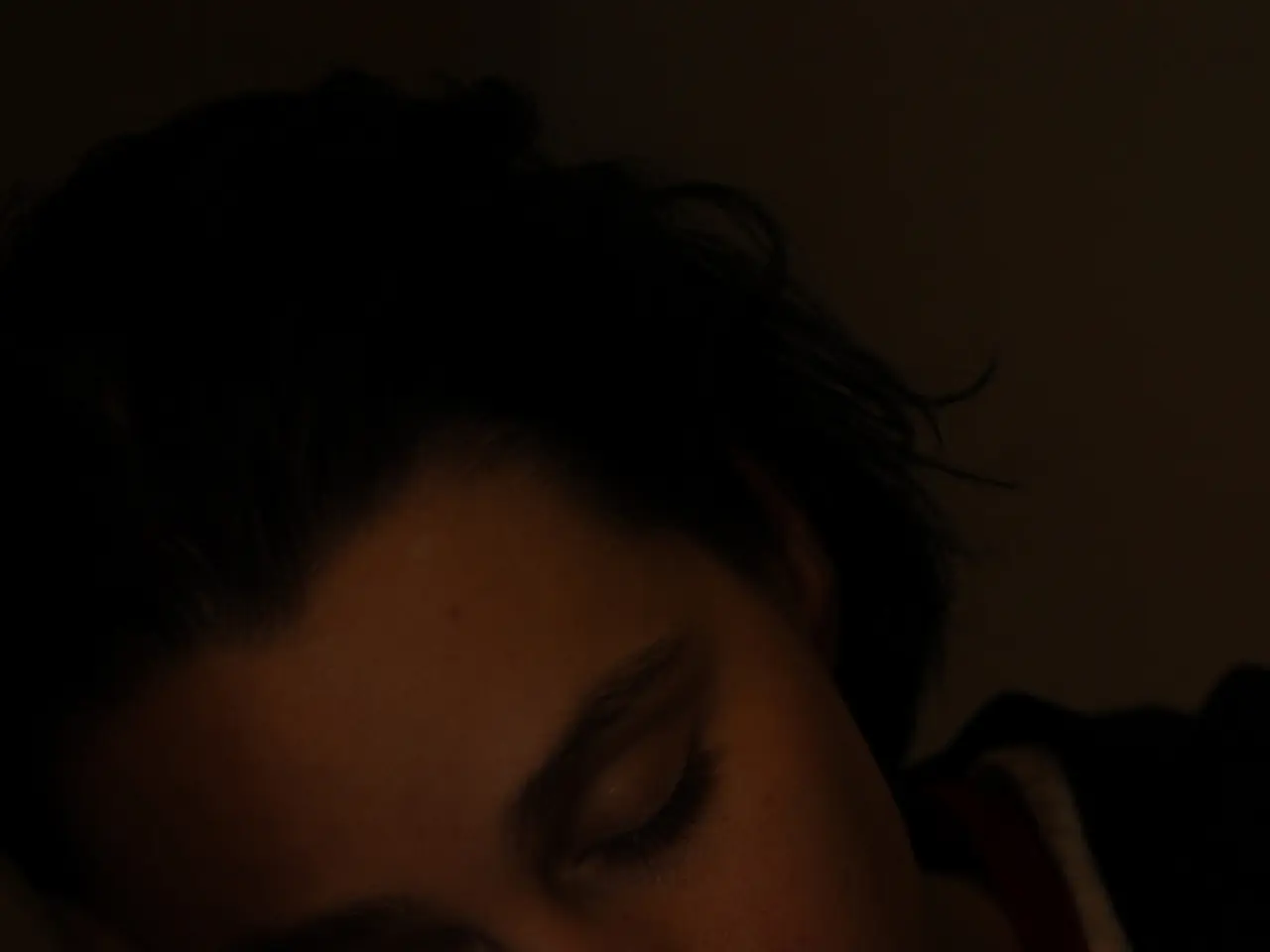Dr. Amir Khan discloses a 5-minute sleep strategy for individuals struggling to sleep tonight
In the quest for a good night's sleep, a new technique called cognitive shuffling is proving to be a valuable tool for many. This innovative sleep method, developed by Dr. Luc P. Beaudoin, a cognitive scientist specializing in sleeping difficulties, aims to manage anxiety and improve sleep quality by distracting the mind from stressful or racing thoughts.
The technique works by mentally generating random, unrelated words prompted by a seed word and briefly visualizing each. This "serial diverse imagining" mimics the natural, disconnected thought patterns seen in people who fall asleep easily, thereby preventing the brain from focusing on worries or active planning that can cause alertness and keep one awake.
A study presented in 2016 by Dr. Beaudoin involved 154 students with pre-sleep arousal. The initial results found that cognitive shuffling helped them fall asleep faster, with users typically falling asleep within 5 to 15 minutes when applying the technique effectively. Participants also reported experiencing less effort to fall asleep and better overall sleep quality.
Cognitive shuffling is a type of sleep cognitive behavioural therapy. It has proven effectiveness for people struggling with sleep, particularly those affected by stress. The study used Serial Adverse Imagining (SDIT), a type of cognitive shuffling, where participants were given randomly generated concrete words with 8-second intervals to maintain the image in their minds.
Dr. Amir Khan, a GP, recommends cognitive shuffling as a sleep technique. However, it's important to note that external factors such as age or underlying health or sleep conditions can impact its effectiveness. If you're still struggling to sleep, it's advisable to book an appointment with your local GP or health clinician.
To practice cognitive shuffling, one should first get into bed, think of a neutral word, and then think of as many words as possible beginning with each letter of the word, while picturing the objects in their mind's eye. This simple and accessible method can help reduce anxiety-driven insomnia and improve sleep quality by shifting the mind's focus away from intrusive thoughts toward random and calming mental images.
It's worth noting that while cognitive shuffling improves sleep quality, it does not improve sleep hygiene, which includes maintaining a consistent sleep schedule, creating a comfortable sleep environment, and avoiding electronics before bedtime.
In summary, cognitive shuffling is a science-backed, easy-to-use technique that can help manage anxiety and improve sleep quality for those struggling with insomnia. If you're finding it hard to sleep, consider giving cognitive shuffling a try. However, it's always a good idea to consult with a healthcare professional if your sleep issues persist.
- The beauty of cognitive shuffling lies in its ability to generate calmness and promote sleep, especially among individuals affected by stress.
- The wellness industry has welcomed cognitive shuffling as one of the promising therapies-and-treatments for those experiencing sleep difficulties.
- A home can be transformed into a sleep-conducive environment with the introduction of cognitive shuffling as a tool for improving sleep quality.
- In the quest for better health and wellness, cognitive shuffling, a science-backed technique, serves as a valuable addition to sleep-cognitive behavioural therapy.
- Mental health is closely related to sleep quality, and cognitive shuffling offers a simple approach to manage anxiety-driven insomnia, contributing to overall wellbeing.




